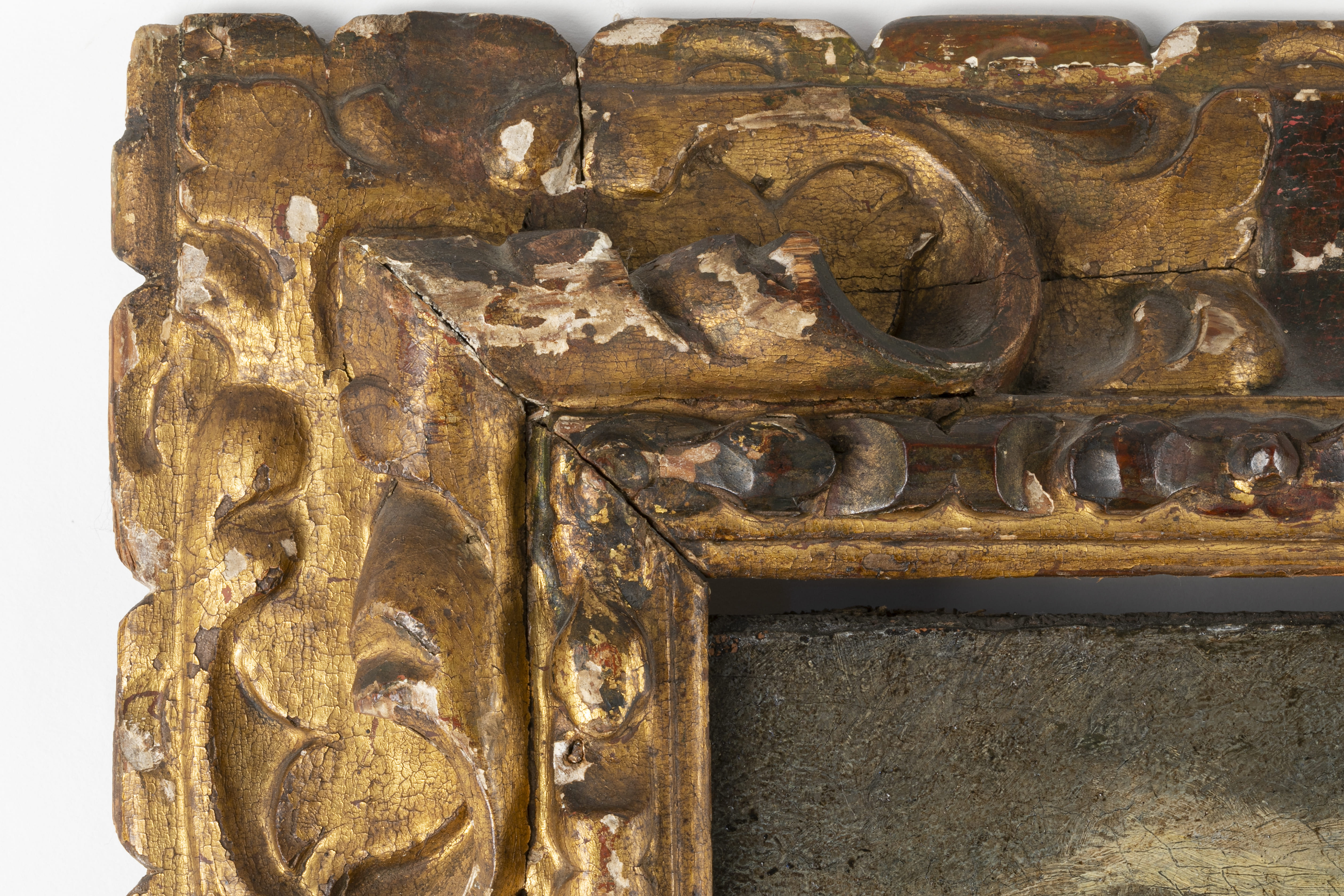Magdalena XVII
Description
Height 89 width 70 cm
Cupcake 17th century
Toledo school
In Toledo a pictorial school was created in which Juan Sánchez Cotán (1560-1627) stands out, an eclectic and varied painter, whose still lifes are especially appreciated. In this Spain at the beginning of the century, the type of still life dedicated to fruits and vegetables reached special importance. Sánchez Cotán, who could not know Caravaggios work, like Juan van der Hamen, develops a style close to what Dutch or Flemish painters ?and painter- like Osias Beert and Clara Peeters, and Italians like Fede Galizia did, strictly contemporary and equally interested in tenebrist lighting, far from the more complicated still lifes of other Flemish masters. [38] The composition in Cotáns still lifes is simple: a few pieces placed geometrically in space. To explain these still lifes, mystical interpretations have been given and it has been said that the arrangement of their elements could be related to proportion and harmony, as Neoplatonism understood them. [39] It should be noted, however, that contemporary writers they never found explanations of these characteristics, limiting themselves to weighing the accuracy in imitating the natural. [40] [41] In his Still Life with Fruit (Still Life with Quince, Cabbage, Melon and Cucumber) from the Fine Arts Gallery of San Diego appreciates the simplicity of this type of representation: four fruits placed in a geometric frame, on the lower edge and the left end, leaving the center and right half of the painting in intense black, with which each of the pieces can be seen in every detail. The architectural framework in which its fruits and game pieces fit is striking; it may allude to the typical cupboards of Spain at the time, but it also undoubtedly serves to reinforce the illusion of perspective. [42]
Other prominent Toledo artists were Luis Tristán and Pedro Orrente. Tristan was a disciple of El Greco, and studied in Italy between 1606 and 1611. He developed a tenebrism of a personal and eclectic nature, as can be seen in the main altarpiece in the church of Yepes (1616). Orrente also resided in Italy between 1604 and 1612, where he worked in the Bassano workshop in Venice. His work, carried out between Murcia, Toledo and Valencia, focused on biblical themes, with a very realistic treatment of figures, animals and objects, as in the San Sebastián of the Valencia Cathedral (1616) and the Apparition of Santa Leocadia
Price
*You must be registered to see the price of this item.
 REGISTER WITH WHATSAPP
REGISTER WITH WHATSAPP* If you don't want to register, you can call us at 659 053 479 for more information.
 NATIONAL AND INTERNATIONAL SHIPPING INSURED UP TO YOUR HOME. FREE IN ANDALUCIA
NATIONAL AND INTERNATIONAL SHIPPING INSURED UP TO YOUR HOME. FREE IN ANDALUCIA 









